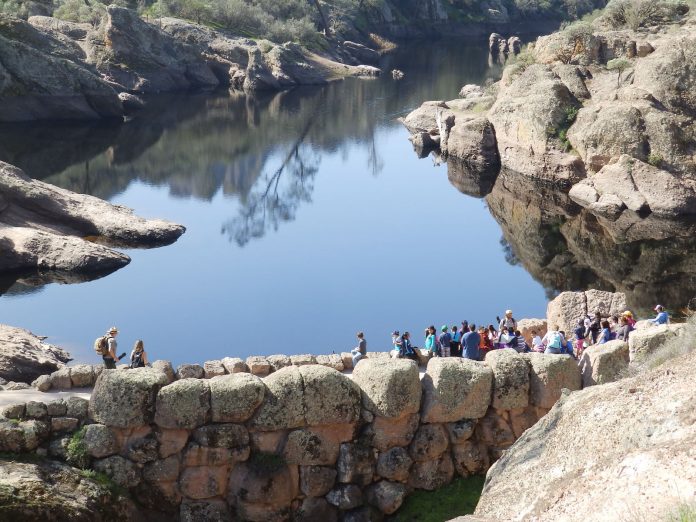With poppies and other wildflowers in bloom, Bear Gulch filled with water and California condors soaring above volcanic peaks, Pinnacles National Park is in its peak season.
Park rangers say that April is the most popular month for hikers of all ages to enjoy one of the newest jewels in the National Park system, located at the southwest corner of San Benito County.
The new year saw the opening of a new hiking trail from the western entrance to the park, east of Soledad, and another increase in vehicle entrance fees.
A seven-day vehicle pass now costs $25—five times greater than when the new park opened five years ago—and another $5 increase is expected later this year.
Drastic cuts to national park staffing that had been included in last year’s budget proposed by the Trump Administration are on hold, but loom in the new budget year.
In the meantime, the parking is enjoying a bright spring, says Park Ranger Beth Hudick.
She said there are hiking trails that serve the most novice and the most experienced hiker, meandering among jutting volcanic spires, cliffs, and peaks in the dense chaparral country of the Gabilan Range. She also advised that weekday visits may be a better time for locals, avoiding heavier weekend traffic. She is one of 40 staff that provide seven-day assistance to visitors.
Pinnacles offers 32 miles of trails, accessible from two entrances. There is no road that stretches across the width of the 41-square mile park, connecting east and west entrances. It’s a 7-mile hike from one side to the other.
Geologists say the spectacular rock formations at Pinnacles were formed about 23 million years ago, when the region was all volcanoes.
The east side of the park is located off Highway 25, about 30 miles south of Hollister. The west side of Pinnacles is 12 miles east of Soledad, off Highway 101. Both entrances to the monument are located on Highway 146, which is obstructed within the park boundary by the Pinnacles rock formations.
The Pinnacles Visitor Center, Bear Gulch Nature Center, Park Headquarters, the Pinnacles Campground, along with the Bear Gulch Cave and Reservoir are located on the east side.
The West Visitor Contact Station is on the West side.
Hudick notes that Pinnacles National Park is primarily a hiking park. The shorter trails are more accessible on the west side of Pinnacles. Park rules allow pets only in the paved areas of the park, including parking lots, picnic areas, and the campground, but are prohibited on all hiking trails. Pets must be on a 6-foot leash and be attended to at all times.
Pinnacles National Park is a protected habitat for many sensitive and even endangered plants and animals, and strictly prohibits pets on all hiking trails.
Hudick said “flat, easy trails”—one a mile and another 1.7 miles— are accessible from the west side parking lot and visitor center.
President Trump’s proposed Interior Department budget for the 2018 fiscal year —still under review—would increase funding for energy development on public lands while cutting virtually everything else, including the National Park Service. Overall the budget would cut the Department of the Interior’s spending by roughly 12 percent.
Last month the National Park Service released its budget justification, explaining the requested funding levels and their impacts. The National Park Service would lose 1,242 full-time equivalent (FTE) staff, leading to significant challenges at almost every park, if Congress endorses the President’s cuts.
At these levels, visitors to Pinnacles, Yosemite and other parks would experience service reductions, and remaining employees will face heavier workloads. At this funding level, it was estimated that nearly 90 percent of parks would reduce their current staffing levels, leading to a reduction in services to the public. Likewise, support programs would also experience staffing and service level reductions, which further impacts parks.
Environmentalists fear that not only would cuts impact the visitor experience, they would hamper the National Park Service’s ability to preserve natural resources.










